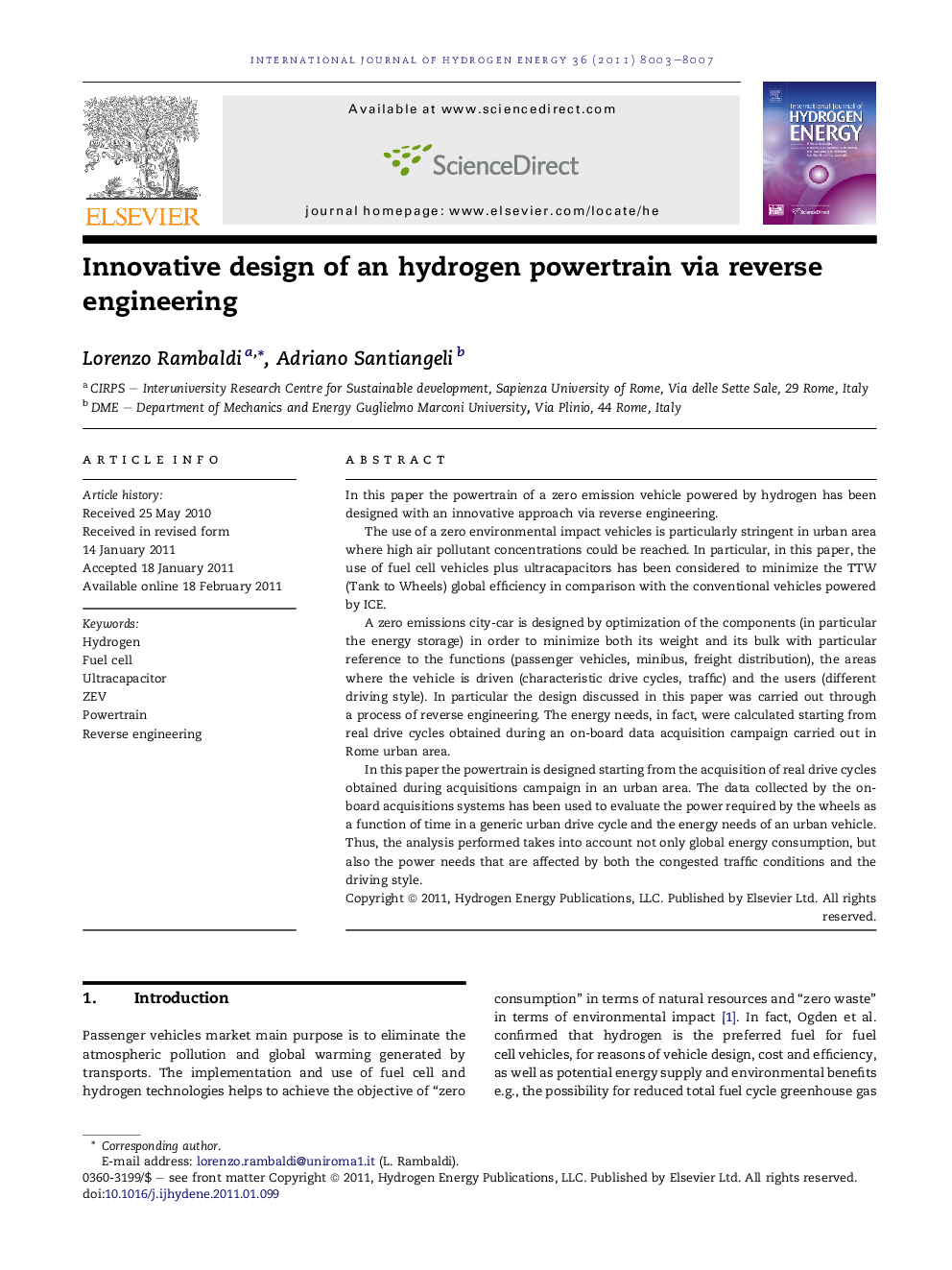| Article ID | Journal | Published Year | Pages | File Type |
|---|---|---|---|---|
| 1279342 | International Journal of Hydrogen Energy | 2011 | 5 Pages |
In this paper the powertrain of a zero emission vehicle powered by hydrogen has been designed with an innovative approach via reverse engineering.The use of a zero environmental impact vehicles is particularly stringent in urban area where high air pollutant concentrations could be reached. In particular, in this paper, the use of fuel cell vehicles plus ultracapacitors has been considered to minimize the TTW (Tank to Wheels) global efficiency in comparison with the conventional vehicles powered by ICE.A zero emissions city-car is designed by optimization of the components (in particular the energy storage) in order to minimize both its weight and its bulk with particular reference to the functions (passenger vehicles, minibus, freight distribution), the areas where the vehicle is driven (characteristic drive cycles, traffic) and the users (different driving style). In particular the design discussed in this paper was carried out through a process of reverse engineering. The energy needs, in fact, were calculated starting from real drive cycles obtained during an on-board data acquisition campaign carried out in Rome urban area.In this paper the powertrain is designed starting from the acquisition of real drive cycles obtained during acquisitions campaign in an urban area. The data collected by the on-board acquisitions systems has been used to evaluate the power required by the wheels as a function of time in a generic urban drive cycle and the energy needs of an urban vehicle. Thus, the analysis performed takes into account not only global energy consumption, but also the power needs that are affected by both the congested traffic conditions and the driving style.
